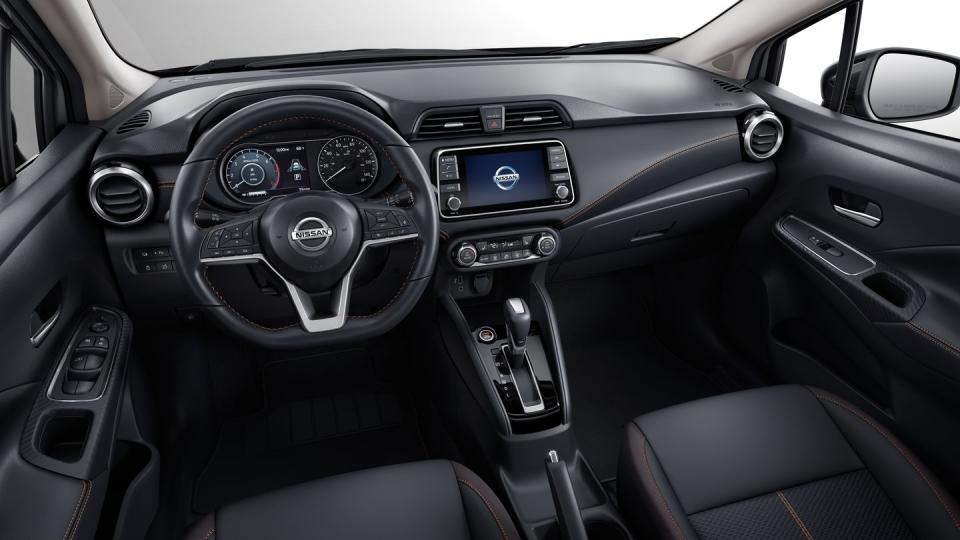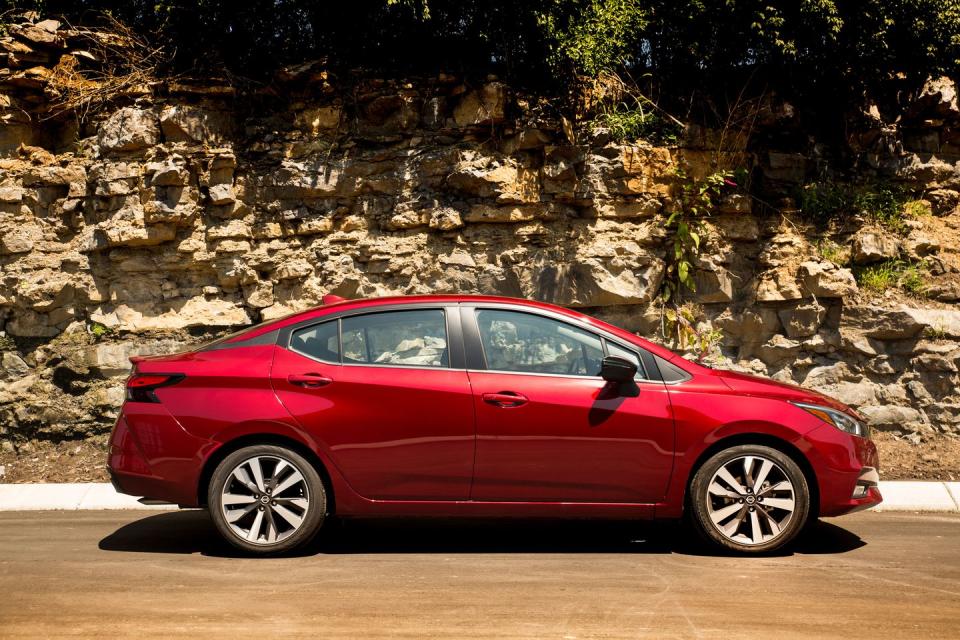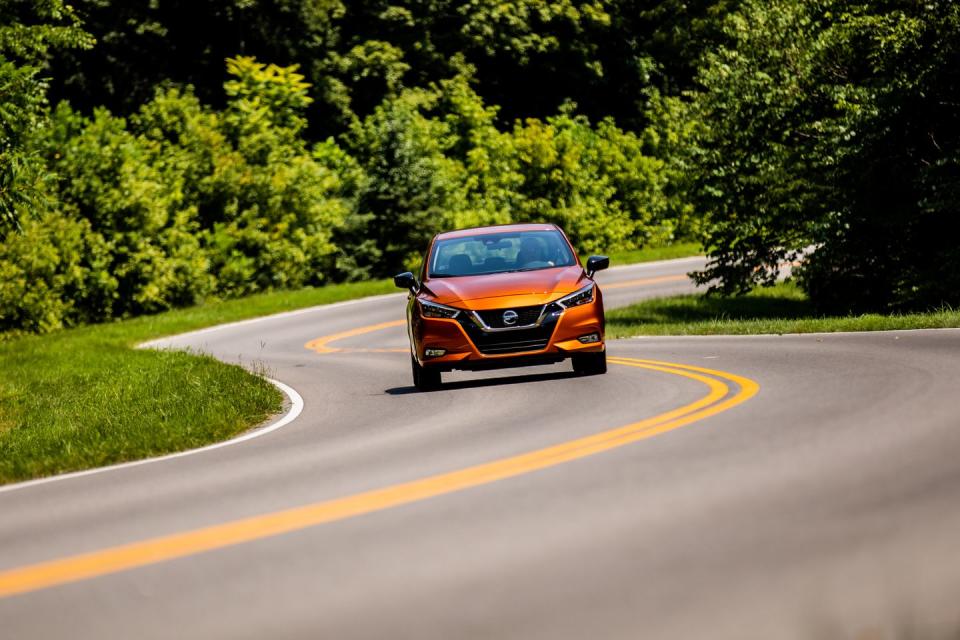The 2020 Nissan Versa Transforms from Rental to Regal

The outgoing Nissan Versa had the distinction of being the cheapest new car in America and reaching more driveways—or perhaps just more rental fleets—than any other car in its class. But while it was popular, it lacked personality and style. Now, however, Nissan atones for those automotive sins with the all-new 2020 Versa, which has vastly improved over its predecessor.
Starting at $15,625, the Versa is no longer the least expensive new car in the U.S., but the subcompact sedan's freshly creased sheetmetal and class-exclusive features warrant the $2270 added to its base price. Likewise, our first hands-on experience verified that the Versa finally measures up to less popular but more sophisticated rivals, such as the Hyundai Accent and the Toyota Yaris sedan.
The Versa has transformed from unquestionably homely to universally handsome, with details cribbed from the attractive Altima and the spunky, if silly, Kicks crossover, which fills the gap left by the dead-for-2020 Versa Note hatchback. Among the Versa's three trim levels (S, SV, and SR), we split our time between the mid-level SV—painted in Nissan's dazzling Electric Blue Metallic—and the top-of-the-line SR, which wears the first factory-offered 17-inch wheels ever fitted to a Versa.

Inside, the new Versa benefits from smoother-grain plastics and more attractive seat fabric compared with the old car. And Nissan upgraded the switchgear, trading the chintzy dials for sturdier knobs.
Unfortunately, the back seat lost its previously spacious accommodations, with legroom shrinking by six inches. Some of that space—about three inches of it—went to front-seat passengers, but our comfort was compromised in both locations.
We also wish the voice-recognition software (on SV and SR trims) understood our commands and that the 7.0-inch touchscreen responded quicker to inputs. Apple CarPlay alleviated both of these concerns during our brief drive, but it's not available on base models.

One of our biggest gripes with the previous Versa was its indifferent on-road demeanor. Sure, it was comfortable, but the driving experience lacked the vigor of the pragmatic, if stale, Accent and Yaris. The new Versa improves on this with a pleasantly firm ride, accurate steering, and a progressive brake pedal.
The dampers no longer allow the sedan to topple into corners, and they help the car maintain a civil attitude on uneven surfaces. No one will mistake the Versa for an enthusiast's car, but this extra dash of driving verve goes a long way. It's also safer: Every new Versa offers automated emergency braking with pedestrian detection, automatic high-beams, and lane-departure warning.

Another notable improvement is the powertrain's newfound refinement. The Versa still uses a naturally aspirated 1.6-liter inline-four, but an increased compression ratio helped Nissan extract another 13 horsepower and seven lb-ft of torque, totaling 122 and 114, respectively. That said, the Versa remains painfully slow, both when we flattened the right pedal leaving a stoplight and when we tried passing on the highway.
The updated Xtronic CVT effectively mitigates engine drone by mimicking real gearchanges. EPA combined fuel economy in CVT-equipped models is up 1 mpg, to 35 mpg, and the CVT's reinforced belt yields better response below 25 mph. The old five-speed manual carries over as standard equipment, though it's only on the S trim, which we didn't drive.
While many automakers are replacing cars with crossovers, Nissan still believes in sedans and says its research shows that younger buyers want them. If it's right, and if those shoppers seek a stylish subcompact with active safety features, Nissan's Versa might gain some traction beyond the fleet buyer's office.
You Might Also Like

 Yahoo Autos
Yahoo Autos 